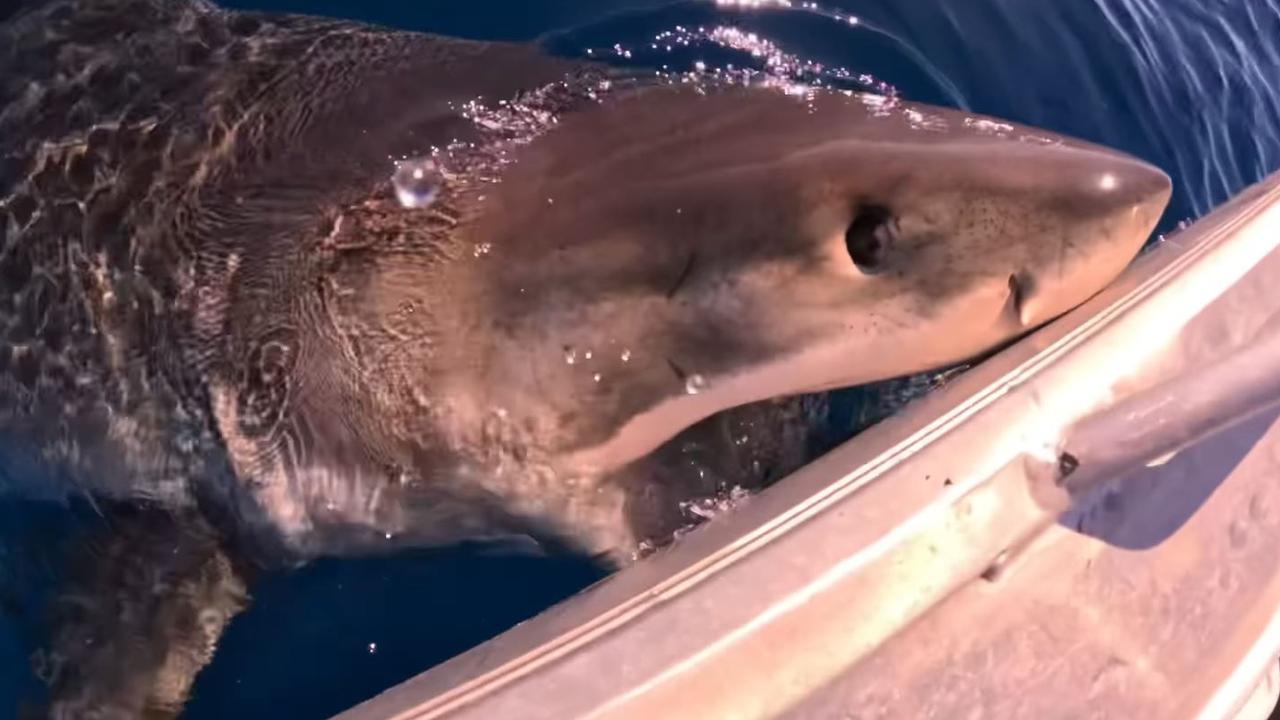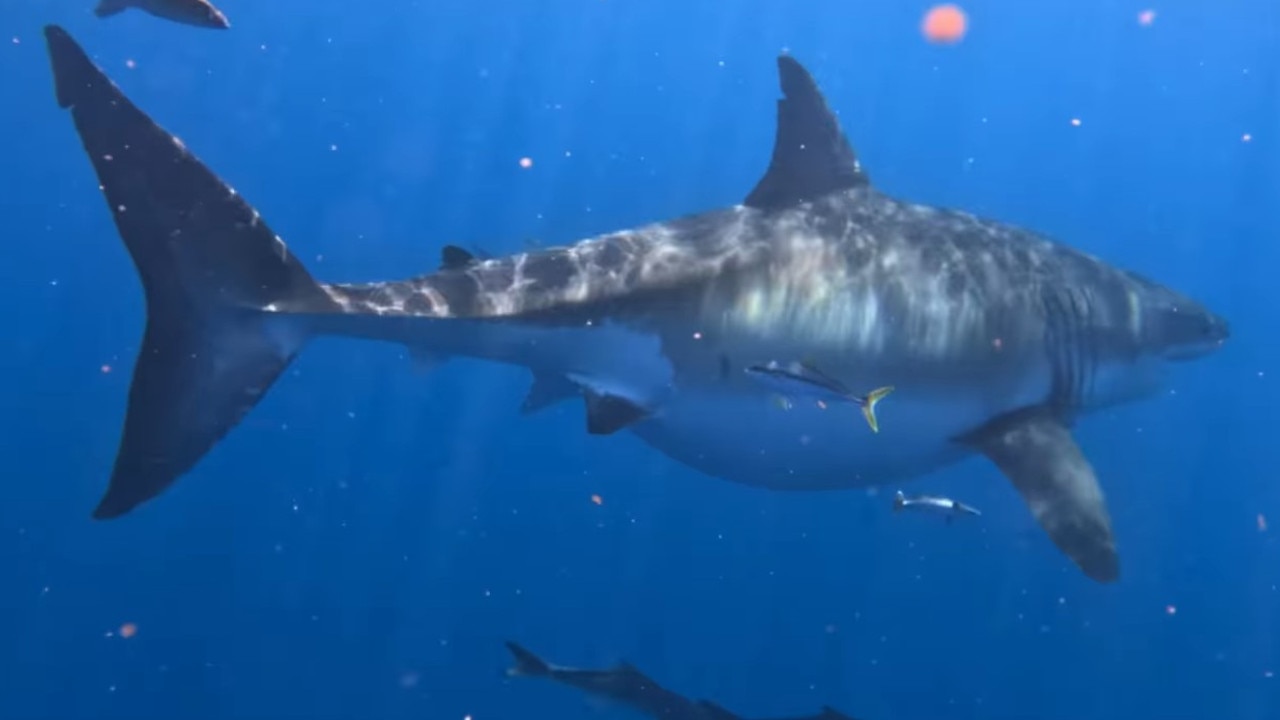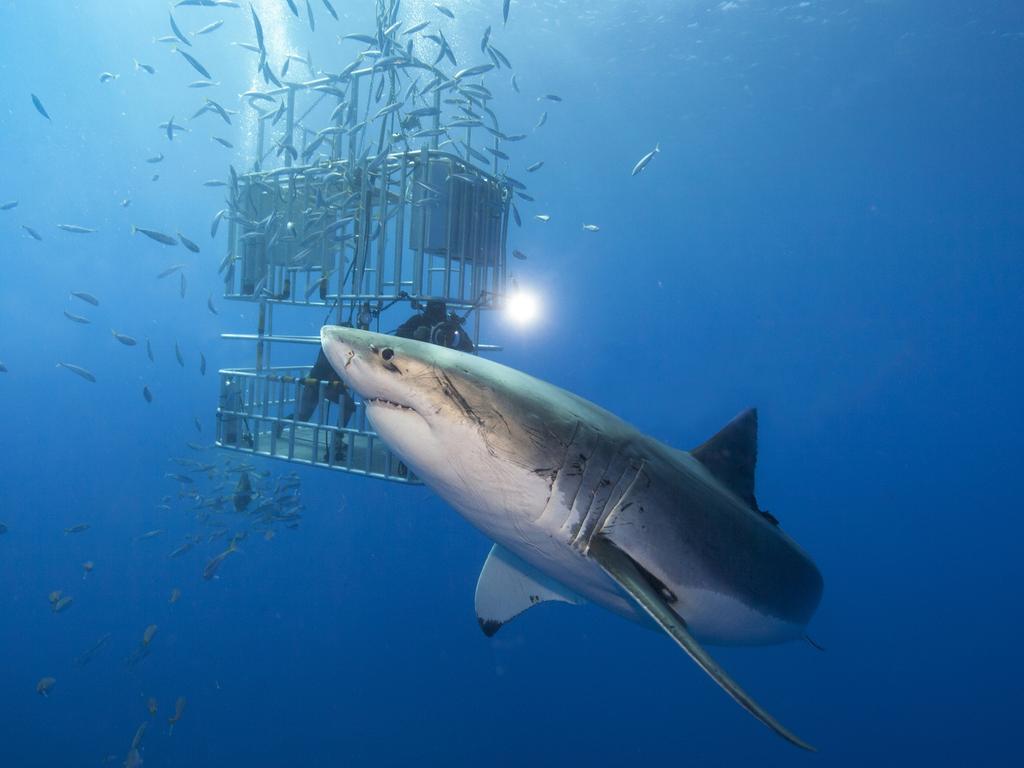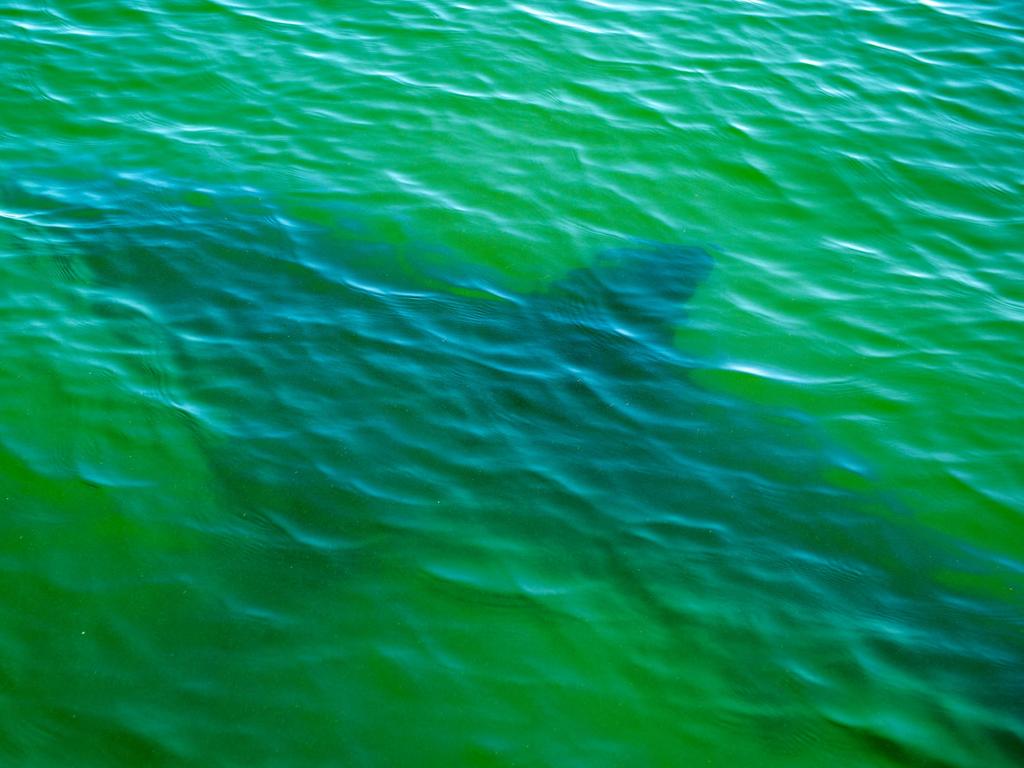Fisherman declared it was ‘time to leave’ after great white bites boat
‘Catch of the day’ took on new meaning for two QLD fishermen after they captured incredible footage of a whopping great white shark that mistook their tinnie for a tasty treat

READING LEVEL: GREEN
A recreational fisherman has captured the wild moment a massive great white shark tried to take a big chomp right out of his boat while it was bobbing off the Queensland coast.
Jayden Grace was fishing at Mooloolaba off the Sunshine Coast on Sunday when the shark began circling his boat.
“That is huge,” Mr Grace said in the video of the encounter.
The viral video showed the large shark circling the boat, while Mr Grace’s friend was still trying to reel in a fish from the other side of the tinnie.
After a minute or so of circling the boat, the great white shark turned its sights on the boat and tried to take a chunk out of the side.
“Whoa! Whoa! Whoa! He just bit my boat!” Mr Grace yelled.
“I think it’s time to leave.”
Footage shows the moment the shark came out of the water and attempted to bite into the boat, before it turned and splashed its tail out of the water before swimming away.
Footage of the boat back on shore revealed teeth marks left by the massive shark.
“That’s what the great white did to my boat,” Mr Grace said.
Mr Grace later described the experience as “unforgettable” in a Facebook post.
“Well, that’s something I’ll never forget! By far the biggest shark I’ve seen in my life! Easy 5m great white shark has a little taste test of the Renegade,” he wrote.

WHAT ARE THE CHANCES?
Shark attacks on vessels are very rare. The Florida Museum of Natural History’s International Shark Attack File (ISAF) investigated 120 alleged shark-human interactions worldwide in 2023 and found just nine involved “boat bites”.
It is possible the shark mistook the tinnie for another shark – as with surfers in black wetsuits thought to be mistaken by sharks for seals. This possible case of mistaken identity helps account for surfers and those participating in board sports making up 42 per cent of incidents in the ISAF 2023 shark attack report.
According to SharkSmart, a NSW Government service, the great white – also known as the white pointer – mainly eats a variety of fish, rays and other sharks. Larger adults eat larger prey including marine mammals*, such as sea lions, seals and small-toothed whales. They also eat dead animals floating in the water.

White sharks are found near shore along most of the world’s temperate* coastlines but are relatively scarce* compared to most other widely distributed shark species.
In Australia, white sharks have been recorded from central Queensland, around the southern coast to North West Cape, Western Australia, however, they are more common in the south.
The biggest recorded specimen* was 7m long and weighed 3200kg.
White sharks are listed as a vulnerable* species in multiple Australian states and in several other countries.
The species has a heat-exchanging circulatory system* that keeps their body warmer than the surrounding water.
Sharks are always present in coastal waters – it’s their natural habitat*. Bites are rare but SharkSmart research has found conditions in which to take extra care:
• Murky, dirty water
• After high rainfall or floods
• Lots of baitfish and diving birds around
• Within 1km of a river

POLL
GLOSSARY
- mammals: Mammals are animals such as dogs and humans that give birth to babies rather than laying eggs, and feed their young with milk
- temperate: pleasant, mild temperatures, agreeable, balmy
- scarce: rare, hard to find, in ow numbers, uncommon
- specimen: example of something, type of its species for scientific study or display
- vulnerable: at risk, in need of special care, support or protection
- circulatory system: the way the heart and blood vessels move blood around the body
- natural habitat: the natural environment in which an animal or plant species normally lives or grows
EXTRA READING
Forklift used to haul massive shark
Aussies hatch sea creature survival plans
Teens fish for sharks in the Top End
QUICK QUIZ
- What kind of shark attempted to bite the boat?
- Where on the Queensland coast did the incident occur?
- What size did Mr Grace estimate the shark to be?
- What was the name of the boat?
- How many fishermen were in the boat at the time?
LISTEN TO THIS STORY
CLASSROOM ACTIVITIES
1. Shark repellent wetsuit
In the article, it states that sharks are often attracted to swimmers or surfers wearing black wetsuits as they think they are seals. Now it’s your job to design a wetsuit to keep the sharks away from humans in the ocean.
Sketch your design and outline all the design elements that will help keep sharks away!
Time: allow 20 minutes to complete this activity
Curriculum Links: English, Science, Design and Technologies, Personal and Social, Critical and Creative Thinking
2. Extension
What would you have done the moment the shark bit the boat?
Could the situation have turned dangerous or possibly life-threatening?
Can you think of a new name for the boat named “Renegade”?
Time: allow 10 minutes to complete this activity
Curriculum Links: English, Personal and Social, Critical and Creative Thinking
VCOP ACTIVITY
Shark or dolphin?!
The thought of swimming out in the ocean and having a fin – any fin – swim past me would make me walk on water.
Can you imagine? Just try!
How would your body feel?
Imagine your heart skipping a beat.
Write a descriptive paragraph recalling or imagining the time you had a close encounter with a dolphin, but thought it was a shark. Use your senses to help create the right emotions for the audience.
Don’t forget to re-read and edit your writing to make sure it is clear and makes sense.
Can you edit and uplevel the piece to use VCOP to make it even better?


